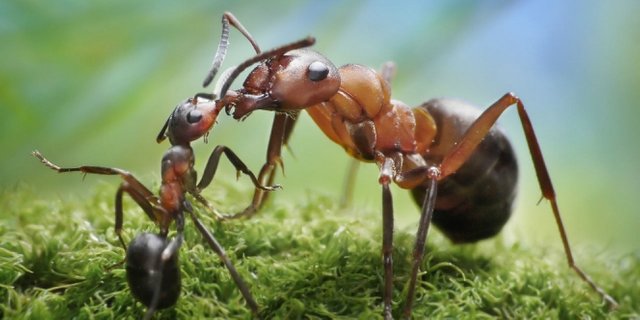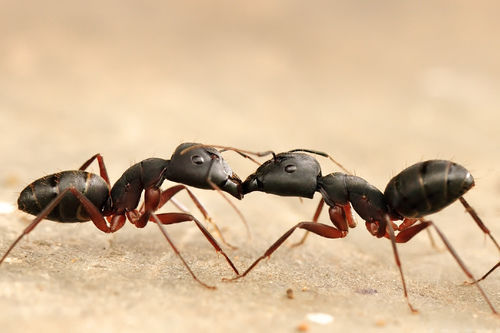Answered, Why Ant always do things like shake hands When Fingers

Dream - You must have seen ants when you passed with friends. They always bring heads together. However, do you know why and what do ants do with that unique habit?
Recently scientists have found the answer. Apparently, the unique habit is done as a form of communication between the ants with each other. Ants deliver chemical signals to their friend's nest by transferring saliva or trophallaxis.
"Many researchers regard trophallaxis as just a means of sharing food, but trophallaxis occurs in other contexts, such as when an ant re-meets a friend's nest after isolation," says Richard Benton, a researcher from the Center for Integrative Genomics at the University of Lausanne, Switzerland, quoted Dream from Science Daily, Thursday, March 9, 2017.
"Therefore we want to see whether trophallaxis exchange exchange contains molecules that allow ants to convey chemical messages to each other, and not just food," he added.

According to a research report published in an eLife journal November 29 last year, scientists discovered that the mouth fluid of Florida wood ants (Camponotus floridanus) contains chemicals that might help to uniform ants in one colony and even affect the growth of their larvae.
To find the molecular content, the researchers had to find a way to collect ant saliva. This task is not easy. Therefore, fluid exchange between ants with each other occurs very quickly and is difficult to predict. Thus, the wait and see method can not be done in this study.
To get the answer, the scientists are fishing trophallaxis from ants by feeding the sugar solution and temporarily isolating them from their friends. This condition is done so that ants more quickly share the spit with their friends when met.
However, this method still produces low levels of saliva and is susceptible to confounding variables. Scientists write mouth fluid ants may alternate with sugar liquids being eaten or by the effects of isolation.
That's why scientists are looking for other ways. They sedate ants temporarily with carbon dioxide and then "squeeze" the mouths of the ants gently until they spit out.
The scientists then compared the fluid with a little saliva that had been collected by the method of giving sugar and ant gut content and blood circulation to ensure that what they collected was the same mouth fluid, which was exchanged during the trophallaxis process.
After obtaining the correct material, the researchers used mass spectrometry, a method for measuring the molecular mass in the sample, to identify the components of the liquid.
Apparently, scientists found a much more content than food. In ant saliva there are dozens of proteins, 64 microRNAs (small segments of the molecule that help translate genetic instructions into proteins and other building blocks of the ant body).
In addition, there is also a long chain of hydrocarbons that can help install a special scent of colonies on ant individuals, signaling important for identification and social interaction. However, this study has not been able to prove that trophallaxis directly affects ant aroma or immunology.
According to the researchers, many proteins in oral fluids are linked to digestion, but at least 10 of them are involved in growth regulation, and progression.
Among these proteins, one of which forms adolescent hormone, a chemical that is essential for the development and behavior of the insect. Further analysis revealed that teen hormones present in the ant mouth fluid.
This analysis is important to know how nurse ant feed larvae with trophallaxis process. The presence of growth hormone in their saliva may play a role in larval development.
To test the allegations, the researchers selected several adult ants and fed them, either foods that were supplemented with adolescent hormones or with inert substances. The result, larvae are fed with more teenage hormones that can survive to adulthood.
According to the authors of this study, Adria LeBoeuf, who is also from the University of Lausanne Center for Integrative Genomics, when the ants feed the larvae, they are not just feeding. Through the hormones and molecules delivered by word of mouth they determine how the development of their colonies in the future.
When ants feed their larvae, they determine the fate of their colonies, managing the number of components that can promote growth to influence the next generation.
"Our findings indicate that trophallaxis underlies the personal communication channel ants use to direct their child's development, similar to milk in mammals," says LeBoeuf.
I am new at Steemit. Its a great community.
I 'm friendly minded.
I need help to grow up this community.
Any one follow me @rsrb and upvote my comment me inform me I also do the same.
Thanks